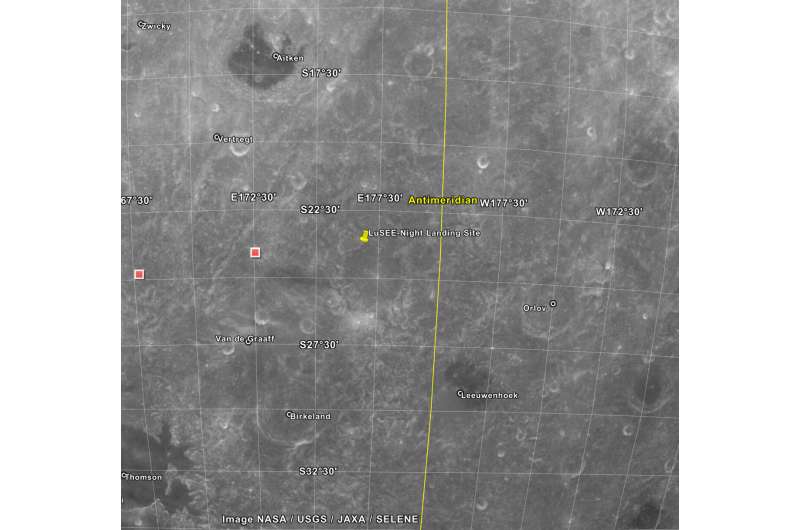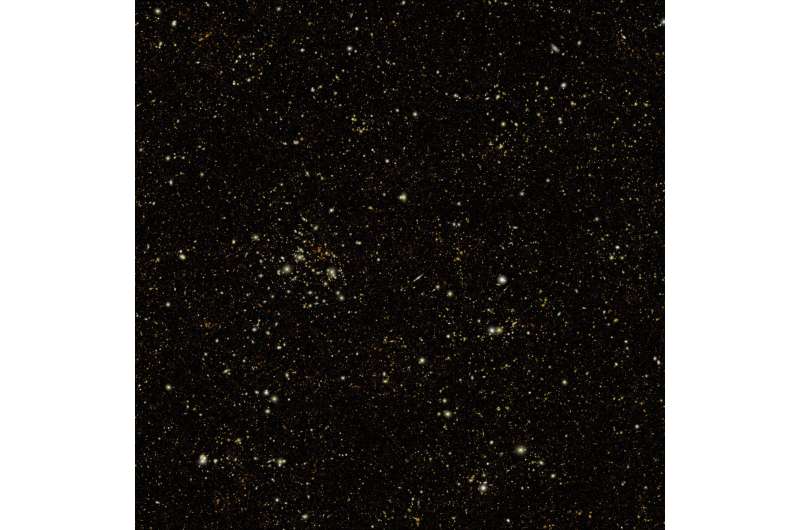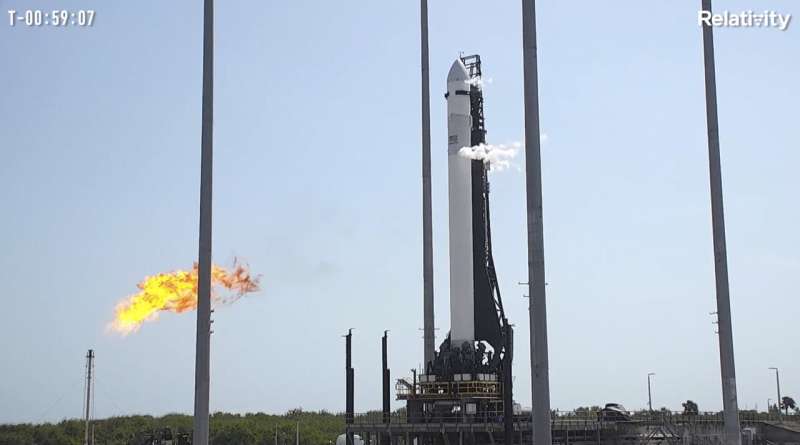Maxar awards L3Harris large deployable reflectors contract
Thursday, 09 March 2023 07:09 L3Harris Technologies (NYSE: LHX) has announced a contract from Maxar Technologies to design and build reflector antennas for two geostationary communication satellites.
The two nine-meter unfurlable mesh reflector antennas will provide high-power signals and improved service quality across the satellites' coverage areas. Similar to an umbrella, the flexible architecture of the antenna mak
L3Harris Technologies (NYSE: LHX) has announced a contract from Maxar Technologies to design and build reflector antennas for two geostationary communication satellites.
The two nine-meter unfurlable mesh reflector antennas will provide high-power signals and improved service quality across the satellites' coverage areas. Similar to an umbrella, the flexible architecture of the antenna mak Globalstar introduces Realm Cloud Mobile Device Management Platform
Thursday, 09 March 2023 07:09 Globalstar, Inc. (NYSE American: GSAT) has unveiled Realm Cloud, an agile mobile device and data management (MDM) platform designed to enable VARs and customers with all the capabilities required to solve speed-to-market needs for deploying and building customized asset tracking and telematics solutions while lowering the cost of ownership.
Designed for an ever-evolving future, Realm Cloud
Globalstar, Inc. (NYSE American: GSAT) has unveiled Realm Cloud, an agile mobile device and data management (MDM) platform designed to enable VARs and customers with all the capabilities required to solve speed-to-market needs for deploying and building customized asset tracking and telematics solutions while lowering the cost of ownership.
Designed for an ever-evolving future, Realm Cloud China to launch LEO constellation of remote sensing satellites
Thursday, 09 March 2023 07:09 China Aerospace Science and Industry Corp, a major space contractor, is planning to deploy a remote-sensing satellite network in low-altitude orbits, according to a project leader.
Song Xiaoming, president of the CASIC Second Academy, said that China intends to establish a space-based, high-performance infrastructure system for global remote-sensing operations.
Remote sensing refers
China Aerospace Science and Industry Corp, a major space contractor, is planning to deploy a remote-sensing satellite network in low-altitude orbits, according to a project leader.
Song Xiaoming, president of the CASIC Second Academy, said that China intends to establish a space-based, high-performance infrastructure system for global remote-sensing operations.
Remote sensing refers Carbon Mission takes stock of CO2 emissions
Thursday, 09 March 2023 07:09 A NASA Earth-observing satellite has helped researchers track carbon dioxide emissions for more than 100 countries around the world. The pilot project offers a powerful new look at the carbon dioxide being emitted in these countries and how much of it is removed from the atmosphere by forests and other carbon-absorbing "sinks" within their borders. The findings demonstrate how space-based tools
A NASA Earth-observing satellite has helped researchers track carbon dioxide emissions for more than 100 countries around the world. The pilot project offers a powerful new look at the carbon dioxide being emitted in these countries and how much of it is removed from the atmosphere by forests and other carbon-absorbing "sinks" within their borders. The findings demonstrate how space-based tools Ceres Imaging expands its agriculture data analytics solutions to Europe
Thursday, 09 March 2023 07:09 Ceres Imaging, the data analytics company that builds precision agriculture solutions to reduce risk and improve sustainability outcomes, is announcing its expansion into Portugal and Spain.
Ceres got its start over a decade ago in California's silicon valley area, and today helps many of the world's largest agriculture land holders detect underperforming assets and identify opportunities
Ceres Imaging, the data analytics company that builds precision agriculture solutions to reduce risk and improve sustainability outcomes, is announcing its expansion into Portugal and Spain.
Ceres got its start over a decade ago in California's silicon valley area, and today helps many of the world's largest agriculture land holders detect underperforming assets and identify opportunities BlackSky wins $150M competitive bid for Space-Based Tactical GEOINT solution
Thursday, 09 March 2023 07:09 BlackSky Technology Inc. (NYSE: BKSY) won a $150+ million competitive contract to provide advanced space-based tactical GEOINT-as-a-service to an international ministry of defense customer.
"BlackSky is taking real-time, space-based tactical GEOINT to the next level with industry-leading rapid revisit capabilities and fully automated low-latency delivery of AI-derived mission intelligence,
BlackSky Technology Inc. (NYSE: BKSY) won a $150+ million competitive contract to provide advanced space-based tactical GEOINT-as-a-service to an international ministry of defense customer.
"BlackSky is taking real-time, space-based tactical GEOINT to the next level with industry-leading rapid revisit capabilities and fully automated low-latency delivery of AI-derived mission intelligence, Relativity Space scrubs first Terran 1 launch attempt
Thursday, 09 March 2023 01:28
Relativity Space will wait at least three days before making its next attempt to launch its Terran 1 rocket after propellant temperature issues scrubbed its first launch attempt March 8.
Relativity Space postpones first 3D-printed rocket launch
Thursday, 09 March 2023 00:04 The Relativity Space launcher Terran 1 postponed the launch of the first 3D-printed rocket to space on Wednesday.
The rocket was to lift off from the Cape Canaveral Space Force Station early in the afternoon, but after several delays, the operation was scrubbed. The launch system automatically aborted during countdown with about 70 seconds to go twice. During the second stoppage, the sy
The Relativity Space launcher Terran 1 postponed the launch of the first 3D-printed rocket to space on Wednesday.
The rocket was to lift off from the Cape Canaveral Space Force Station early in the afternoon, but after several delays, the operation was scrubbed. The launch system automatically aborted during countdown with about 70 seconds to go twice. During the second stoppage, the sy U.S. intelligence report: China’s commercial space sector to become global competitor by 2030
Wednesday, 08 March 2023 23:23
The fast growth of China’s commercial space industry is helping the country progress toward its goal of edging out the United States in space, the U.S.
Lunar telescope project aims to search for ancient radio waves
Wednesday, 08 March 2023 20:15
Scientists at the U.S. Department of Energy's (DOE) Brookhaven National Laboratory are leading a new effort to land a radio telescope on the moon. If successful, the project will mark the first step towards exploring the Dark Ages of the universe.
The Dark Ages are an early era of cosmological history starting about 380,000 years after the Big Bang. There were no stars or planets in the Dark Ages. It's a point in time that scientists have never been able to observe.
Millions of galaxies emerge in new simulated images from NASA's Nancy Grace Roman Space Telescope
Wednesday, 08 March 2023 20:13
3D-printed rocket's debut launch aborted at last minute
Wednesday, 08 March 2023 18:02
A rocket made almost entirely of 3D-printed parts remained on the pad Wednesday after its debut launch attempt was aborted at the last minute.
California-based Relativity Space was attempting to launch the rocket to orbit from a former missile site at Cape Canaveral Space Force Station.
U.S. Space Force game plan: Compete with China, prevent shooting war in orbit
Wednesday, 08 March 2023 16:45
In the space domain, the plan is to be in a state of “perpetual competition" with rival powers, said Gen.
Starfish Space raises $14 million for in-orbit servicers
Wednesday, 08 March 2023 16:01
Starfish Space has raised $14 million for its planned satellite life extension and debris removal service in a funding round led by insurance giant Munich Re, the startup announced March 8.
Shield Capital adds retired general Goldfein to national security advisory board
Wednesday, 08 March 2023 14:13
Shield Capital, a venture firm that invests in defense and space startups, announced that retired U.S.

